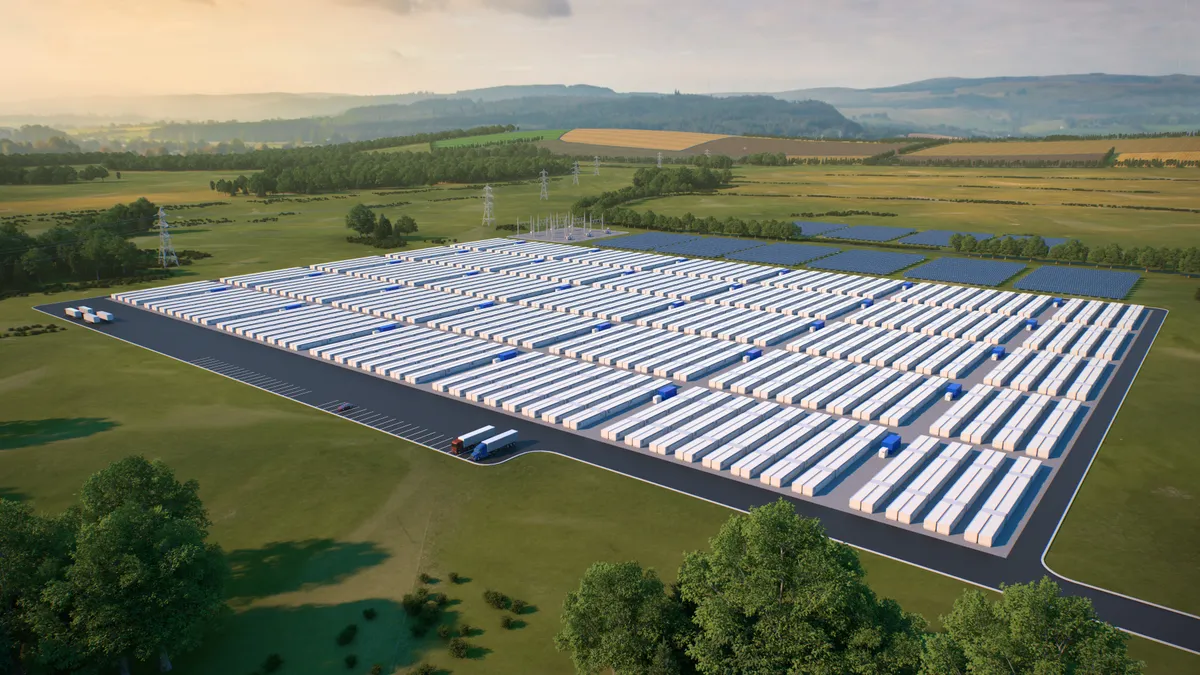The Department of Energy has selected 15 long-duration energy storage projects for a total of up to $325 million in awards, with Alliant Energy, NextEra Energy and Xcel Energy among the potential grant recipients.
The funding, through the bipartisan infrastructure act, includes up to $286 million for operating storage projects and up to $39 million for six projects that will be tested at DOE’s national laboratories.
The projects will help DOE realize its Long Duration Storage Shot goal of lowering long-duration storage costs by 90% by 2030, the department said Friday.
Cheaper, longer and more efficient energy storage is needed to help utilities and grid operators adopt and use growing amounts of emissions-free resources, like solar and wind, DOE said.
DOE said the selected projects include a range of intraday — 10 to 36 hours — and multi-day — 36 to more than 160 hours — storage solutions that can minimize the number and length of power outages caused by severe weather, cyberattacks and other events.
Before the funding is issued, DOE and the project developers will negotiate final agreements, and the department can rescind its selections during that time, according to DOE.
DOE said it required funding applicants to submit a community benefits plan showing how their projects would support communities, invest in the workforce, advance energy and environmental justice, and promote diversity, equity, inclusion and accessibility, and deliver benefits to disadvantaged communities.
Some of the selected energy storage projects include:
- The Rural Energy Viability for Integrated Vital Energy project, which will use vanadium redox flow batteries that can discharge for up to 20 hours. The National Renewables Cooperative Organization is overseeing the project with Central Electric Power Cooperative, Central Iowa Power Cooperative, Dairyland Power Cooperative, North Carolina Electric Membership Corporation, Old Dominion Electric Cooperative, and other partners.
- The Front-of-the-Meter Utilization of Zinc Bromide Energy Storage project includes several 10-hour projects at existing renewable energy facilities owned by NextEra in North Dakota, Oregon and Wisconsin. If successful, there is a “high replication” potential across future NextEra renewable projects, DOE said.
- The Columbia Energy Storage Project in Wisconsin would be the first commercial scale project demonstrating a closed-loop carbon dioxide-based energy storage system to be built by Energy Dome, based in Milan, Italy. Alliant, WEC Energy Group and Madison Gas & Electric plan to build the 200-MWh project next to a coal-fired power station that is scheduled to retire in 2026, according to DOE. Alliant said the project is in line to receive $30 million from DOE.
- The Multiday Iron Air Demonstration calls for deploying two 10-MW/1,000-MWh long duration Form Energy systems at two of Xcel’s retiring coal-fired power plants in Minnesota and Colorado. Xcel said it could receive $70 million from DOE for the projects.
- The Stored Rechargeable Energy Demonstration project aims to test the viability of Urban Electric Power’s zinc manganese dioxide batteries in large scale and long-duration energy storage systems, according to DOE. The project will provide more than 600 kW for more than 12 hours per discharge at sites in New York.
- The 1.2-GWh Pumped Thermal Energy Storage in Alaska’s Railbelt project is the largest, planned U.S. long-duration storage facility, according to project leader Westinghouse Electric. The pumped thermal energy storage project, which involves heating concrete blocks, will assist in local and regional grid resiliency and stability while firming a planned wind farm, according to DOE. Golden Valley Electric Association is a partner in the project.














